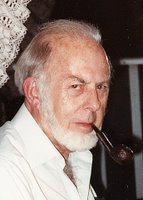Discriminated Against For Being Veterans Lacking Money
 Shortly after the Second World War a couple of veterans started a taxicab company in Akron. Called it G.I. Cab. All the drivers, mechanics, office workers and even the guys that pumped gas were veterans.
Shortly after the Second World War a couple of veterans started a taxicab company in Akron. Called it G.I. Cab. All the drivers, mechanics, office workers and even the guys that pumped gas were veterans.Broke as usual, I applied for a job in 1949 and was hired as a driver. Kept at it a couple of years and learned a lot about people and politicians. I'm not sure most politicians qualify as people.
It would have been hard to find anything bad to say about G.I. Cab Company. The cabs - pale gray with red roofs and blue lettering - were immaculate. Washed twice a day, thoroughly cleaned both inside and out. The drivers were lean, neat, clean and courteous.
But we weren't popular. Why? Because the owners didn't have money to slip under the table to politicians or hand out to businessmen. Yellow Cab did.
Yellow cabs were equipped with two-way radios. When the G.I. owners asked for radios the Akron City Council had two words for them: Absolutely not! The owners hadn't approached council with money in hand. Not having radios when the competition did was a severe handicap.
So we had call boxes scattered around the city. When you dropped off a fare you would drive to the nearest call box and talk to the dispatcher. Sometimes he had a fare for you to pick up, sometimes he told you to wait where you were, sometimes he said to come back downtown. He ended every message with, "Call me."
One day I picked up a man at Iacomini's, the best restaurant in town at the time. "They really don't like you guys in this town, do they?" he said, then went on to explain, "I asked the people inside to call a G.I. cab for me but they said no, they only call Yellow cabs. They told me that if I wanted a G.I. I'd have to go outside and use a pay phone. So I did."
But a Yellow pulled in just behind me. There were no other people waiting so obviously the management of the restaurant had called Yellow as soon as the man stepped outside.
We were young and tough, though, so we had ways of evening the score. The main cab stand downtown was at an intersection that had Akron's best hotel and the two leading department stores on three of its corners. To get in line there you had to get in another line around the corner. A dispatcher there would wave to the first cab when he got a call saying a spot had opened up. If a Yellow was at the front of the line a G.I. would pull up beside the first G.I. behind it. As soon as the dispatcher's phone rang the G.I. on the outside would shoot ahead and beat the Yellow, who then had to drive around the block and fall in at the rear of the line.
If you saw a Yellow cruising a downtown street you would pull along side, then speed up and cut him off when you saw a potential fare ahead. If there were two G.I.s on the street we sometimes boxed a Yellow in so he couldn't go anywhere. We helped each other out in beating the Yellows at the bus and train stations, too.
We drove twelve hours a day, six days a week and averaged about $35, including tips. The longer you drove, the fewer tips you got because you learned how people stiff you if you provide them with extra help.
One day I picked up a man at a hotel and was told he wanted me to find his car. After checking in the night before he had made the rounds of the bars. At the last one he was too drunk to drive so they sent him back to the hotel in a cab. He didn't know the name or location of the bar. It was a chance to run up a big bill just driving from one bar to the next but I pumped him for information. He finally said he remembered a bar named Jessie's or something like that. There wasn't a bar by that name in Akron but there was a Jesser's on Thornton Street. I drove him there and found his car. I had saved the guy a lot of money. He tipped me a dime.
When the big snowstorm hit on Thanksgiving night in 1950 no cabs were on the street for a week. Although operating on a shoestring, G.I. gave each of its drivers $35. I doubt that Yellow did the same. Yes, you learned a lot about people driving a G.I. cab.
visit: www.dickstodghill.com


0 Comments:
Post a Comment
<< Home